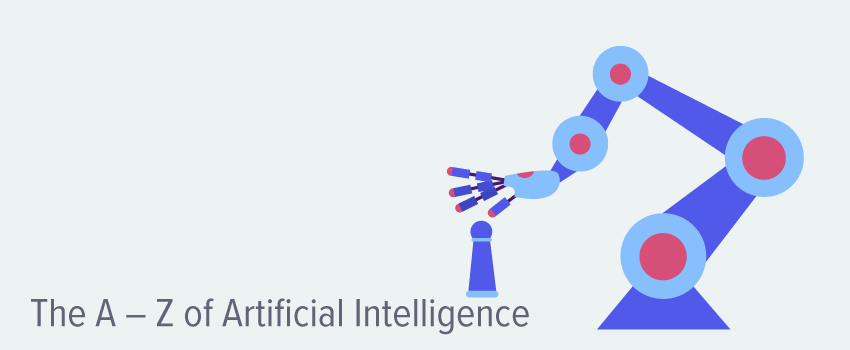
How to Get Your IT Service Desk Ready for 2020
It’s hard to believe that 2020 is almost upon us and we will no longer get those “IT service management (ITSM) in 2020” blogs that were popular mid-decade – and back then it seemed such a long way off. Now, as we rapidly approach 2020, life is probably very different from where we thought we’d be when predicting the future back in 2015 or earlier. Especially because cost-reduction strategies were definitely the order of the day for IT support.
So, what will the real 2020 look like and what do you and your IT service desk need to be focused on as you prepare for, and then enter, it?
What was expected of 2020 ITSM in 2013?
Why 2013? Well, trying to find usable predictions of our ITSM future that were made in 2015 is not easy. But I did find this one where, in 2013, the future of ITSM teams was deemed to involve:
- Thinking about what they (or the business) achieve through what they do – I’d call this a focus on value
- IT success being measured at the point of IT (service) consumption – I’d call this employee experience
- Changing the mindset that supports technology to one that supports people – employee experience again
There were additional points but those aren’t relevant to this blog. What is relevant though, is what wasn’t predicted.
There was no mention of the greater use of automation, the introduction of artificial intelligence (AI)-enabled capabilities for IT support, or enterprise service management (or back-office digital transformation). Proving how hard it is to predict the future of anything accurately.
And how many IT support personnel have the luxury of looking that far into the future anyway?
I remember hearing a story about someone participating in two different ITSM webinars on the same platform (and thus with the same potential audience reach). One webinar was related to problem management and the other related to the future of ITSM (and included industry “influencers”). Guess which webinar had the most registrants and live attendees. Yes, the “help with the here-and-now” problem management webinar was nearly ten times as popular as the “discussion on what might be.”
In many ways, this is understandable. If IT service desks can’t survive the challenges of today, then why do they need to worry about any future challenges?
This leads me to the reason for writing this blog – that, at only three months away, 2020 is finally likely to be considered important to IT support pros!
Get your IT service desk ready for 2020
After that long tee-up, what should your IT service desk be planning to invest in, and to improve, next year?
What will the real 2020 look like and what do you and your IT #servicedesk need to be focused on as you prepare for, and then enter, it? Click To TweetIn many ways, my preamble had already started to express this, with three key areas of focus for 2020 including:
- Value
- Employee experience
- Automation and AI.
1. Focus on value
If you’ve caught up with the introduction of ITIL 4, then you’ll be fully aware of the necessity for ITSM’s greater focus on value – with this business value, not IT value or value for money (although both of these are important too). Even if you haven’t, I’d be willing to bet that conversations with business stakeholders within your organization have been moving on from cost to value.
If you stop to think about ITSM, value creation should be what we do. For example, ITIL 4 defines a service as: “A means of enabling value co-creation by facilitating outcomes that customers want to achieve, without the customer having to manage specific costs and risks.” Where value is “The perceived benefits, usefulness, and importance of something.”
So, here’s the value challenge for IT support – what are the perceived customer benefits and importance of IT service desk activities such as incident management and service request management? Importantly, it’s not something we can guess ourselves within IT support. Instead, we need to ask our customers. Plus, in order to ensure that value is being delivered, we need to be able to measure related performance and demonstrate the level of success.
Sadly, there’s not a “one size fits all” set of value-based metrics for an IT support team to employ. With what’s valuable to your stakeholders firstly dependent on your organization, then on the different types of stakeholder (for instance, end users), and perhaps even based on individual opinions. There is good news though – the fact that you’re engaging stakeholders about value will likely automatically uplift their perceptions of your IT service desk’s value.
@Joe_the_IT_Guy shares three actions to get your IT #servicedesk ready for 2020. Click To Tweet2020 action – start that conversation with key business stakeholders and ensure that you quickly act on the results.
2. Improve the employee experience
You’ll find a number of different definitions of what employee experience is on the Internet. However, a good one, in my opinion, is offered up by Forrester Research:
“Psychological research shows that the most important factor for employee experience is being able to make progress every day toward the work that they believe is most important.”
From an IT support and end user perspective, there’s a definite overlap between employee experience and value. Given that the IT service desk likely provides, at a minimum, the additional IT equipment employees need to do their job, and maybe their initial equipment too (depending on your organization’s employee onboarding processes). Plus, and critically, the IT service desk is responsible for making employees productive again when they’re adversely affected by IT issues.
Unfortunately though, in understanding employee enablement, your current customer satisfaction (CSAT) feedback mechanism is unlikely to be a true gauge of the employee experience. Especially if your IT service desk is scoring highly while employees still have issues with the service and support they receive.
As per the 2013 statements above, CSAT can be trying to measure IT success at the wrong point (and the wrong time). Hence, if you want to get a better understanding of the employee experience, a good place to start would be to build on the customer successes of companies such as HappySignals and Nexthink (which both provide employee experience management capabilities for IT support).
For example, HappySignals measures the levels of employee happiness and lost productivity, providing more granular information on what facets of IT support make employees happy and unhappy. Ultimately allowing IT service desks to reduce the level of lost productivity by improving employee happiness, with a ten-point increase in employee happiness equating to a one-hour reduction in lost productivity (and the associated cost). You can read more about what influences employee experience here.
2020 action – question the value of your current CSAT approach, plus other key IT support metrics, and introduce new ways to understand your IT service desk performance from an employee perspective.
In 2020 you need question the value of your current CSAT approach, plus other key IT support metrics, says @Joe_the_IT_Guy #ITSM Click To Tweet3. Use automation and AI to improve the above
A lot has already been written about the power of automation and now AI to achieve the trifecta of “better, faster, cheaper” for IT support and its customers. And most IT service desks already have some automation capabilities in place – from the automated workflows within their ITSM tools to native or third-party capabilities for automating high-volume, low-value IT management tasks. The opportunities of AI now add to this. As do the opportunities of “automation and AI.”
As we enter 2020, an important point to understand is that AI is no longer a future opportunity. Because it’s already here to help with IT support and other ITSM needs – from chatbots to AIOps – with this demonstrated in vendor offerings and industry surveys. For example, the latest Service Desk Institute (SDI) survey data shows that approximately:
- 20% of IT service desks are already doing something with AI
- 50% of IT service desks are looking at what’s happening and what could be done with AI
- 30% of IT service desks aren’t moving on AI yet.
In my opinion, every IT service desk should be at least looking at what’s happening, and what could be done, with AI. Even on a budget of nothing.
Don’t wait for the green light for #AI adoption, says @Joe_the_IT_Guy, start investigating the art of the possible, and understanding what it means for your IT #servicedesk (and its people), now. Click To TweetIt will take considerable time and effort to move from doing nothing to successfully leveraging AI capabilities for IT support. So, at least be doing as much as possible (and sensible) now to ensure that your organization can move swiftly and with confidence as and when it’s ready for AI adoption.
2020 action – don’t wait for the green light for AI adoption, start investigating the art of the possible, and understanding what it means for your IT service desk (and its people), now.
So, that’s three actions to get your IT service desk ready for 2020. What else do you plan to do? Please let me know in the comments.
Finally, just to remind you, Windows 7 support will end on January 14 2020 too!







